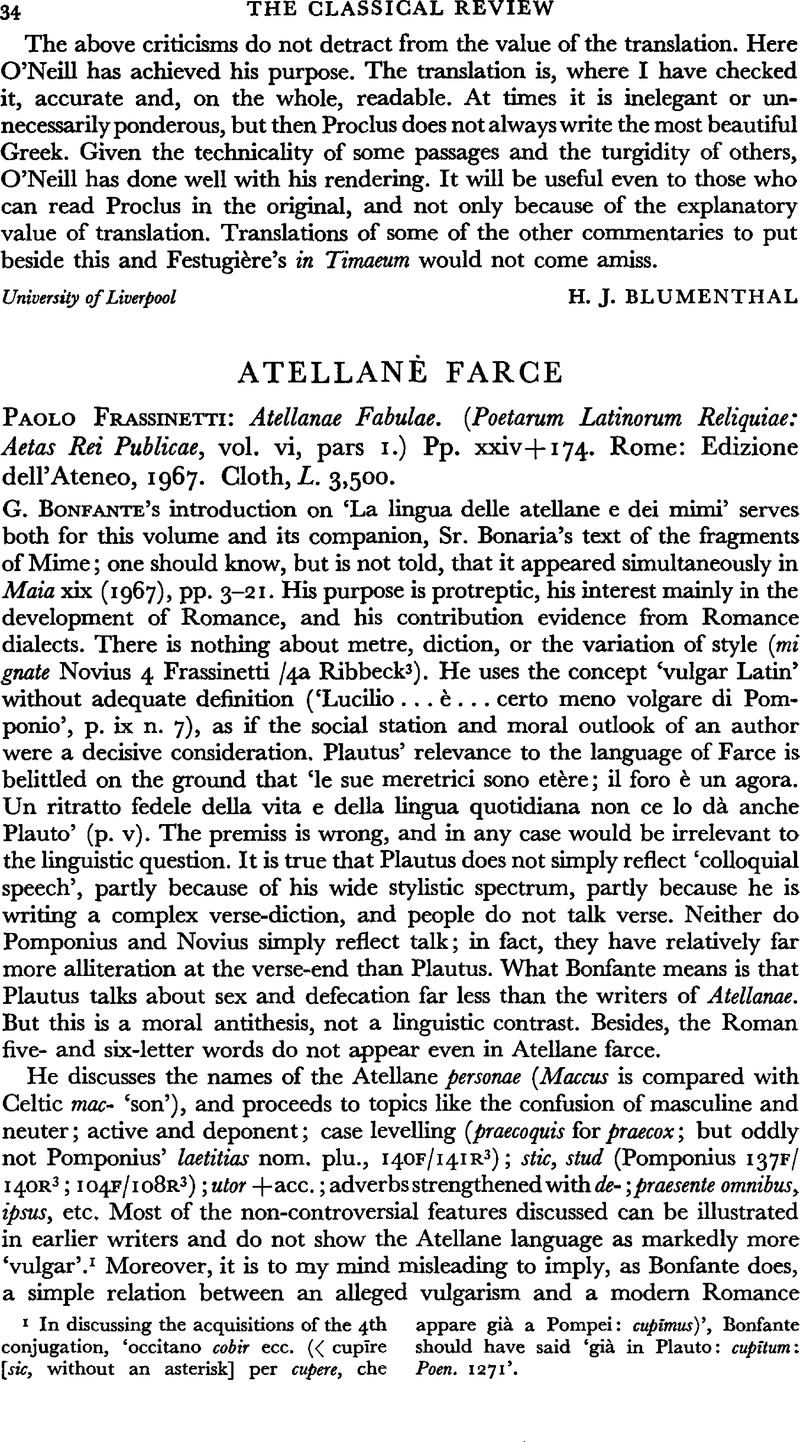No CrossRef data available.
Published online by Cambridge University Press: 27 February 2009

page 34 note 1 In discussing the acquisitions of the 4th conjugation, ‘occitano cobir ecc. (〈 cupīre [sic, without an asterisk] per cupere, che appare già a Pompei: cupīmus)’, Bonfante should have said ‘già in Plauto: cupītum: Poen. 1271’.
page 35 note 1 Fabularum Atellanarum Fragmenta ed. Frassinetti, P. (Turin, Paravia, 1955)Google Scholar, reviewed, to the considerable benefit of the present edition, by Handley, E. W., C.R. lxx (1956), pp. 239 f.Google Scholar
page 35 note 2 If so, he will be able to find out about in Questa's, C. fine new Introduzione alla Metrica di Plauto (Bologna, 1967), pp. 129 ff.Google Scholar
page 35 note 3 Frassinetti does not include this example of nĕquĭs in the index verborum.
page 36 note 1 Pomponius 87F/92R3nescioquid: non est hoc merum quod nunc plorat -⌣- as printed involves a false quantity (mērum) or, with nēscĭō quid, another breach of the rule. also 176F/176R3; Novius 38F/38R3. In the formulas above, ‖=verse-end and …. = genuine word-break.
page 36 note 2 Cursory soundings: add Novius 73 sum, Novius 19 nate; a false quantity is given for Novius 26F venit; for fame 71P read 73P. It does not distinguish words introduced by conjecture, and does curious things with siquis, si, quis, nequis and ne, nescioquid, and nescio quis, as does the text.